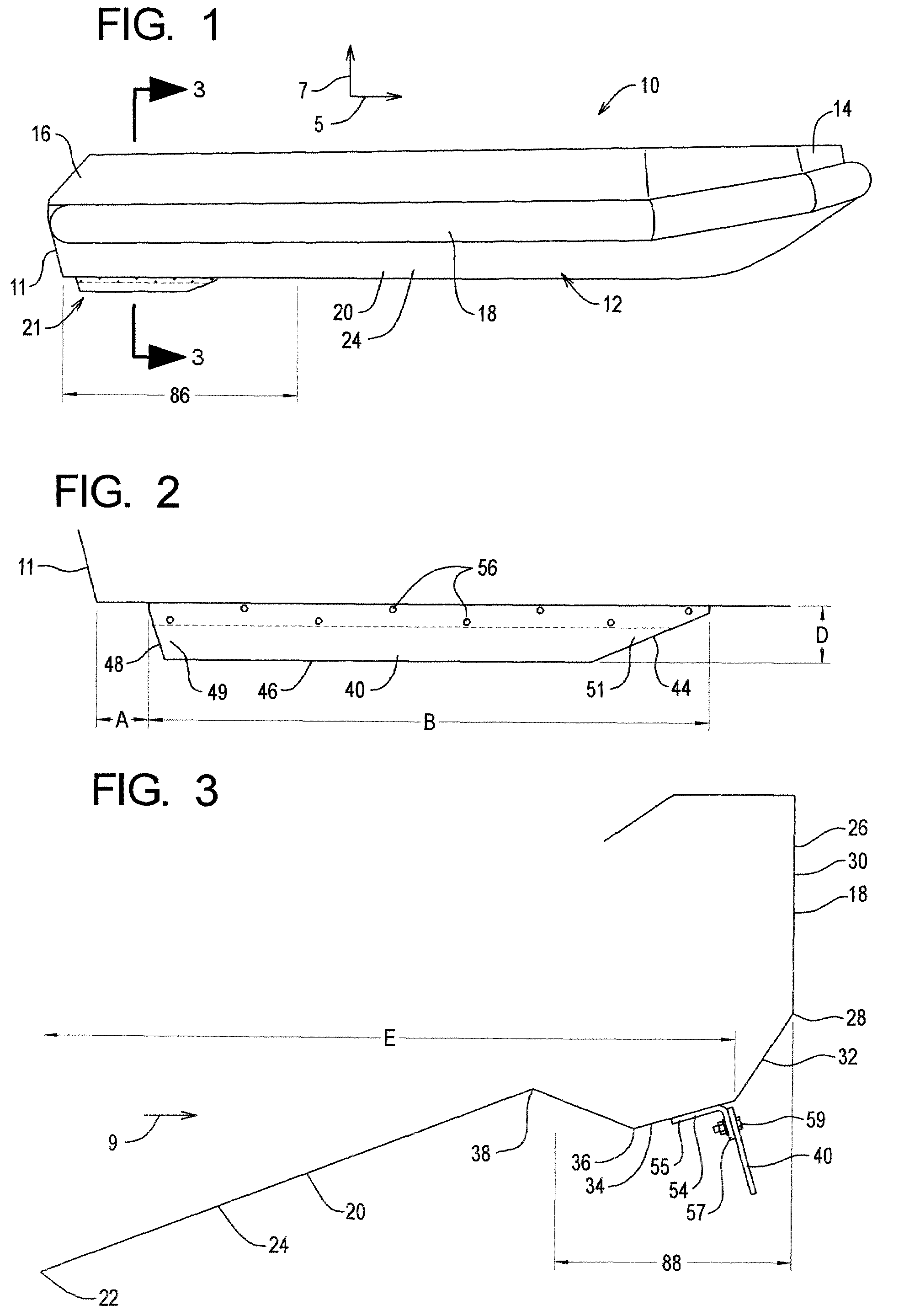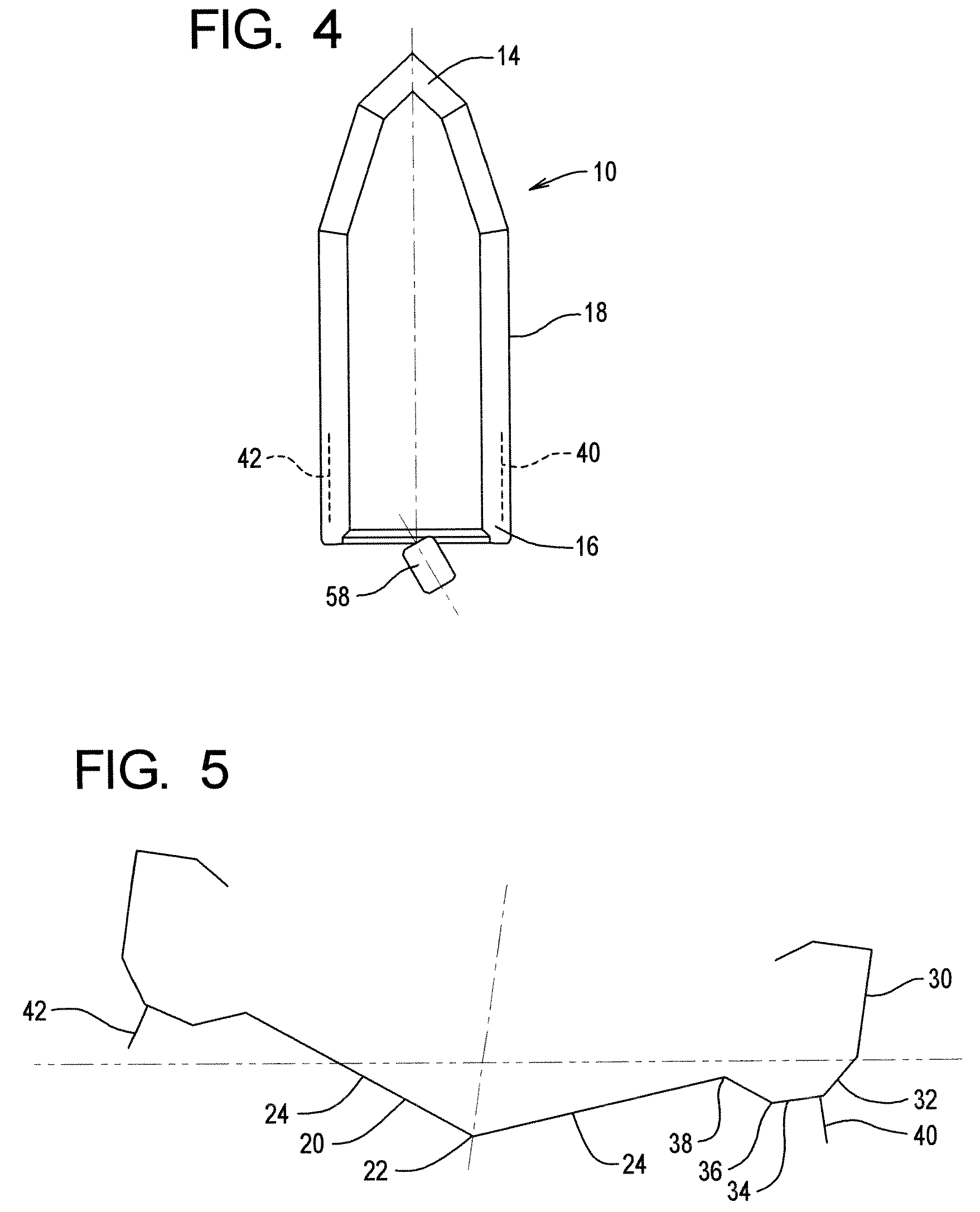Fin stabilizer to reduce roll for boats in turns method and apparatus
a technology of stabilizer and turn, applied in the direction of bilge keels, special-purpose vessels, vessel construction, etc., can solve the problems of unfavorable sharp turn, inability to properly execute the turn, and inability to stabilize the boa
- Summary
- Abstract
- Description
- Claims
- Application Information
AI Technical Summary
Benefits of technology
Problems solved by technology
Method used
Image
Examples
Embodiment Construction
[0039]As an introductory comment, the present invention is particularly adapted for use in a boat such as shown and described in the recently issued patent, U.S. Pat. No. 6,520,107 B1, with the inventor being one of the inventors as in the present application. The entire text and drawings of U.S. Pat. No. 6,520,107 B1 are hereby incorporated by reference.
[0040]The boat 10 comprises a hull 12 having front and rear end portions 14 and 16, sidewalls 18, and a bottom wall 20. As can be seen in FIG. 5, in this particular configuration the bottom wall 20 is V-shaped so as to have a center keel 22 and two bottom wall sections 24 slanting upwardly and laterally outward at a moderate angle from the keel 22 at a moderate angle relative to the horizontal.
[0041]As is disclosed more completely in U.S. Pat. No. 6,520,107 131, the sidewall portions 18 are in this configuration made of aluminum sheets which have in cross-section a multi-creased configuration comprising planar portions 26 which conn...
PUM
 Login to View More
Login to View More Abstract
Description
Claims
Application Information
 Login to View More
Login to View More - R&D
- Intellectual Property
- Life Sciences
- Materials
- Tech Scout
- Unparalleled Data Quality
- Higher Quality Content
- 60% Fewer Hallucinations
Browse by: Latest US Patents, China's latest patents, Technical Efficacy Thesaurus, Application Domain, Technology Topic, Popular Technical Reports.
© 2025 PatSnap. All rights reserved.Legal|Privacy policy|Modern Slavery Act Transparency Statement|Sitemap|About US| Contact US: help@patsnap.com



